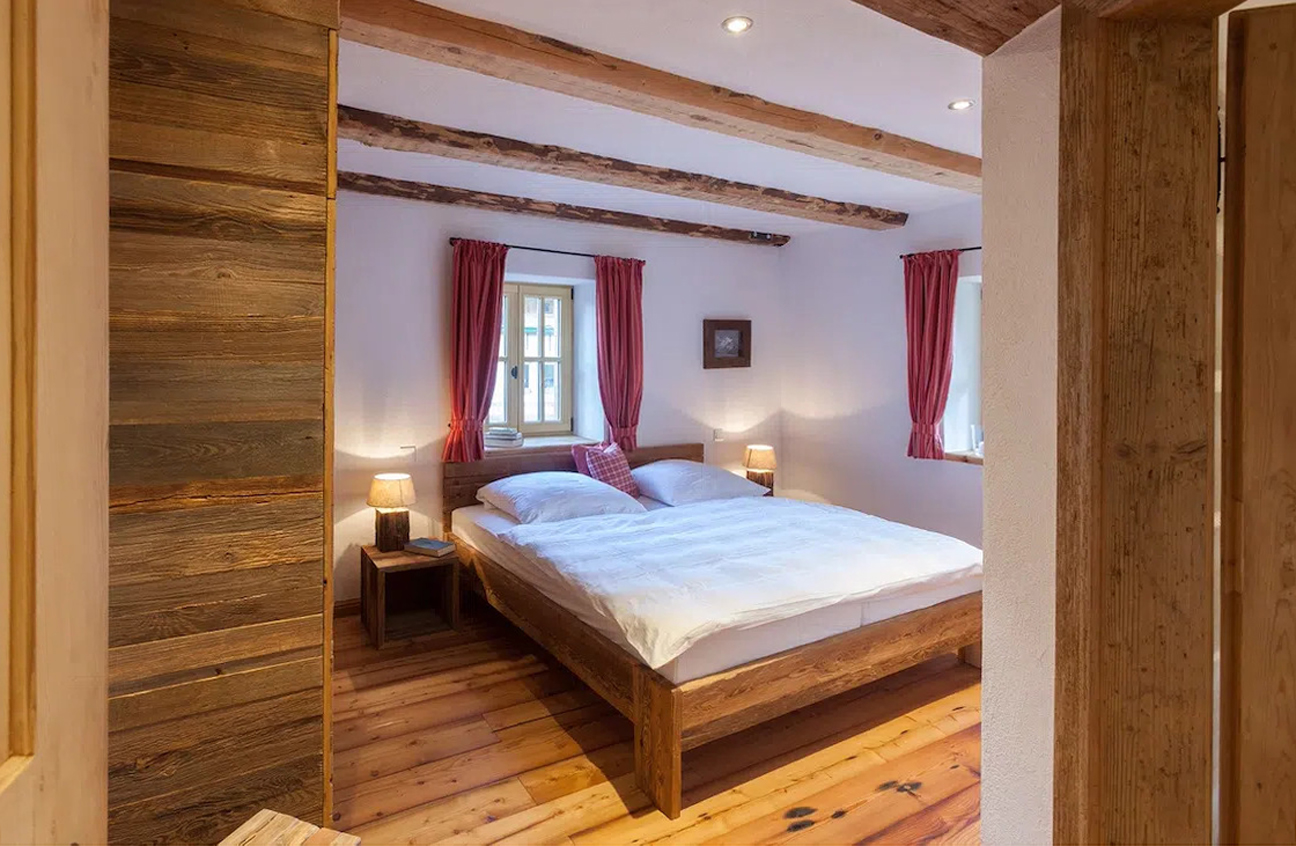
Antique Scots Pine represents reclaimed lumber from European Scots Pine trees that were harvested decades or centuries ago. This species, native to northern Europe and Asia, was extensively used in construction and shipbuilding throughout European history. The “antique” designation indicates lumber that has been salvaged from old buildings, bridges, or other structures, giving it both historical significance and unique aging characteristics.
Scots Pine is characterized by its distinctive reddish-orange heartwood and pale yellow to white sapwood. The heartwood’s color intensifies with age, developing rich orange and red tones that can appear almost burgundy in antique specimens. The wood typically exhibits a straight grain pattern, though some pieces may show slight spiral grain or small knots that add character. The texture is medium to fine, with a natural luster that responds well to various finishes.
One of the most notable characteristics of aged Scots Pine is how it develops a beautiful patina over time. The wood’s natural resin content, combined with exposure to air and light over decades, creates depth and richness in color that cannot be replicated in new lumber. This aging process also tends to stabilize the wood, reducing its tendency to move or warp compared to freshly cut material.
Antique Scots Pine is moderately hard and works well with both hand and machine tools, though the aged resin can sometimes cause blade dulling. It’s an excellent choice for furniture making, interior millwork, and decorative applications where the warm, aged appearance is desired. The wood’s relatively light weight compared to hardwoods makes it suitable for applications where weight is a consideration.
Distinctive Coloration – The rich orange-red heartwood deepens with age, creating warm tones that range from bright orange to deep burgundy in the finest specimens.
Stable Dimensions – The natural aging process reduces wood movement and warping tendencies, making it more predictable to work with than fresh lumber.
Moderate Density – This wood is lighter than most hardwoods while still maintaining sufficient structural soundness for furniture and millwork applications.
Excellent Workability – The material machines and finishes well despite the age-hardened resin content, though sharp tools are recommended for best results.
Historical Provenance – Much of this lumber is sourced from centuries-old European structures, providing authentic historical character and cultural significance.
Unique Patina – Natural aging creates irreplaceable depth and character in the wood’s appearance that cannot be duplicated through artificial finishing methods.